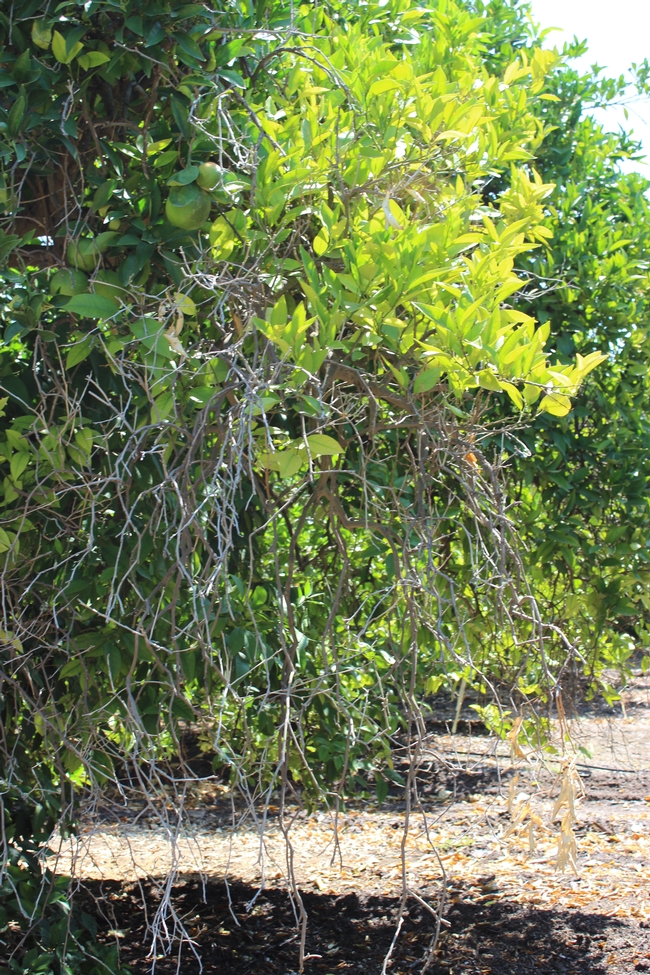I had a chance to talk to PCA Dennis Seaton a few weeks back. During the farm call, he mentioned that he was making a survey of leaf ‘yellowing’ in his clients’ citrus orchards. He explained that he thought this would help him in the future, should HLB disease show up, in distinguishing the yellowing associated with HLB, from the other things, both biological and abiotic, that currently cause leaves to yellow in Kern County. This project sounded like a good idea to me. Currently, every time a new article appears in our local Bakersfield paper related to ACP and HLB, my phone is busy with homeowners concerned with yellow leaves. Unfortunately, we have always had a lot of ‘yellow’ leaves on Kern County citrus trees. A list of a few things (not complete) that can cause leaf yellowing is as follows:
Citrus stubborn disease - caused by a mycoplasm – also produces small, hard, green, lopsided fruit
Root rots (e.g.Phytophthora species, Fusarium species)
Alkaline soil - iron deficiency
Excessive irrigation
Gas leaks, oil-field waste oil in soil
Sunburn, heat stress (tends to be on older leaves)
Nutrient deficiency – iron, zinc, manganese,
Nutrient toxicity – boron, arsenic, sodium, chloride
Trifoliate and citrange tree decline
Pre-emergent herbicide uptake
Mite feeding, citrus leaf miner feeding, citrus thrips feeding
Chemical toxicity from foliar sprays (e.g. Biuret toxicity)
Tristeza disease – caused by a virus
For those who really want to try to diagnose HLB from yellow leaves, pictures of leaves with HLB can be found at the following webs address; http://www.californiacitrusthreat.org/huanglongbing-citrus-greening.php .
If we mentally divide a leaf with HLB symptoms in half, longwise, along the midrib, the yellowing is more asymmetric than is the case with other factors that can yellow leaves. That is, one half of the leaf will have yellow areas in different locations than the other half. Yellowing from zinc deficiency, on the other hand, looks pretty similar between halves. HLB leaf yellowing often affects individual branches or shoots more than neighboring branches or shoots. If you see leaf yellowing, always looks for the presence of ACP nymphs on new, young leaves. The nymphs, about the size of aphids, produce distinctive waxy tubules. See the website at www.californiacitrusthreat.org for pictures of the nymphs and adults of ACP. The insects themselves are much better indicators of possible HLB infection than leaf yellowing. The production of small, hard, greenish-yellow, sour fruit is another indication of HLB infection (but not definitive).
